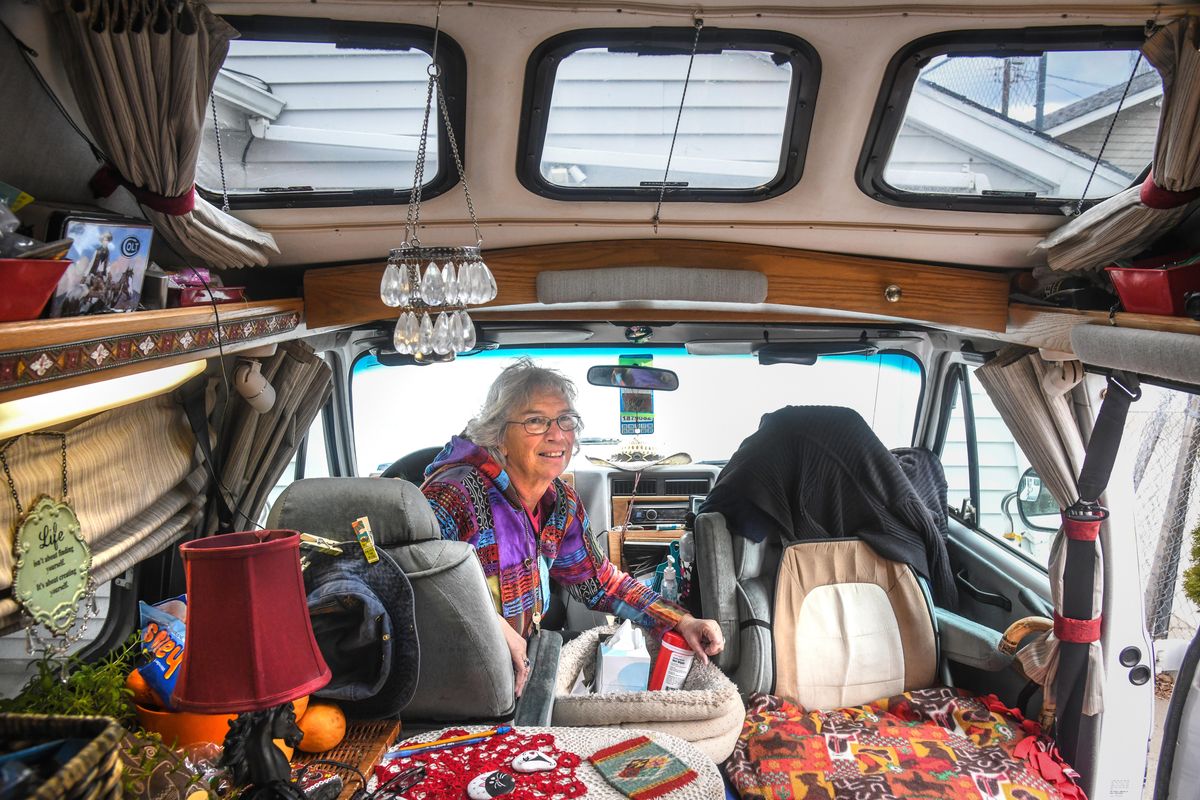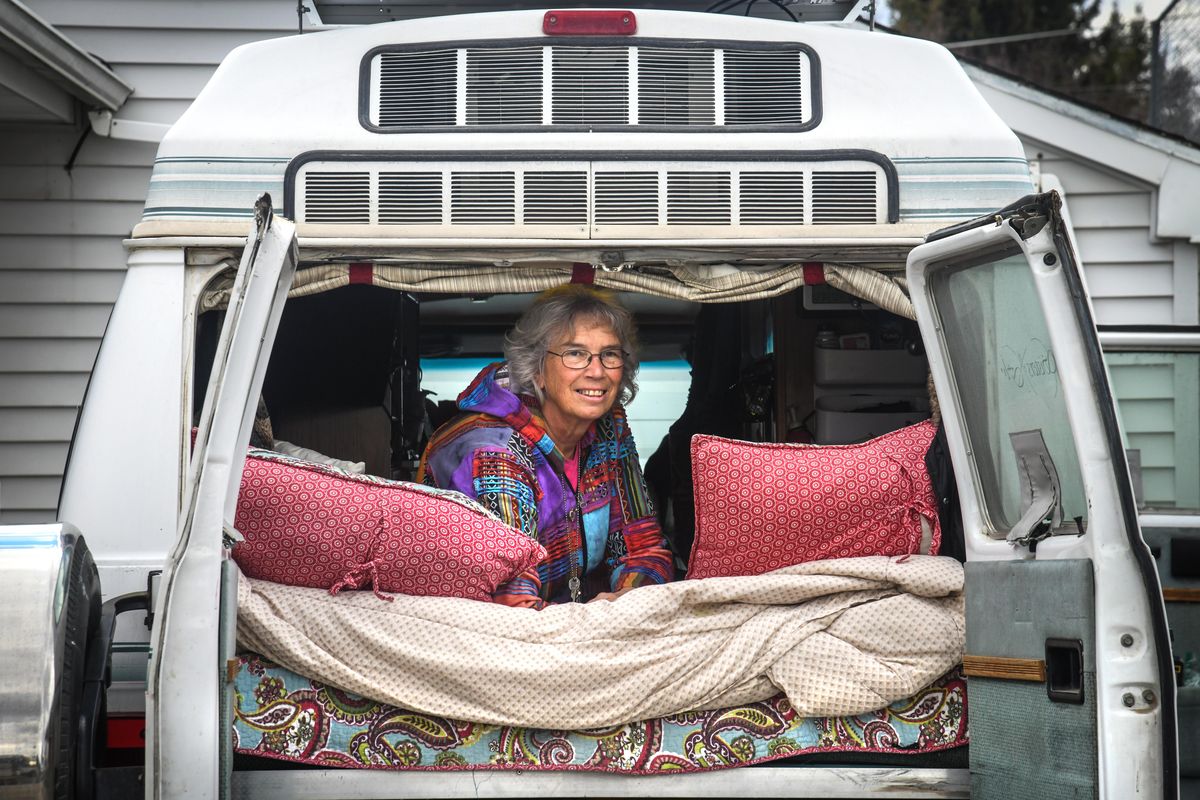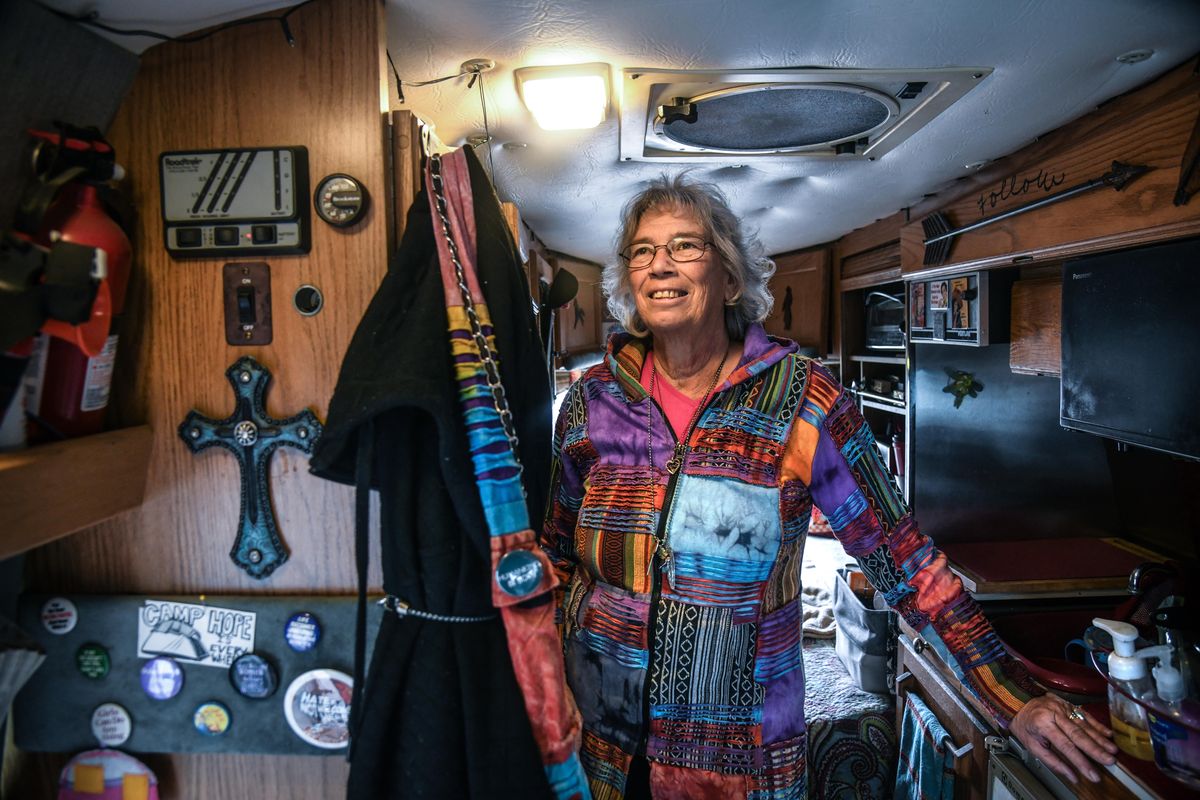Stranded snowbirds: Spread of the coronavirus has left full-time RVers and van dwellers on the run

The changes started slowly – little things like looking just a little harder to find water – then crescendoed, a cascade of closures and cancellations and leery looks leading ultimately to Karen Blaine’s return to Spokane.
For two years Blaine, 69 (but nearly 70), has lived full time out of her Roadtrek van, a cramped space full of brightly colored fabrics. She’s one of a million or more Americans who’ve forgone “stick and brick” homes for a more nomadic existence.
Like nearly all Americans, though, the spread of the novel coronavirus – a microscopic spherical invader – has upended her day-to-day life.
About two weeks ago, she started struggling to fill her water tanks. She was in Arizona then, along with a number of other RVers and van dwellers, a modern-day caravan hopping from place to place.
“People would turn you away,” she said, of the small towns in which she stopped.
Next, state parks started to charge more for camping and dumping sewage. Soon, those same parks were closing. Blaine, who often stays on undeveloped Bureau of Land Management property, depends on parks to dump her sewage.
Karen Blaine, 69, is normally on the road in her Roadtrek van for nine months of year more or less but had to come home early to Spokane to offer support to her elderly aunt. (Dan Pelle / The Spokesman-Review)Buy a print of this photo
Rest stops, which have places to dump sewage, were next.
“That’s when I really started panicking,” she said.
At the same time, she started worrying about her 96-year-old aunt in Spokane and her disabled daughter.
“There are not a lot of people left to look after the people I care about,” she said.
Because of that, she came back to Spokane a week ago. Blaine has no permanent home and barely scrapes by after a string of Dickensian bad luck (2008, medical debt; 2009, laid off; 2011, crushed three vertebrae; 2011, broke her leg).
“Living in your van in Spokane is not easy,” she said. “When you’re living out on BLM land, there is a peace and serenity and connection to nature that I love. Living in a driveway or living with family is disconnected from that.”
As stay-home orders impact at least one out of every five Americans, everyone is adjusting to a new reality. For those who live on the road, it’s a particularly confusing and unsettling time.
“I just don’t know what to do,” Joyce Harris said. “I don’t know where to go from here. At first I was thinking, ‘Yeehaw, the gas prices are down. I can afford to really travel now,’ but that’s not the case.”
Harris left Spokane on Feb. 9. Unlike Blaine, she still has a house in Spokane Valley. But her son and his girlfriend are renting it until July. Right now, Harris is in South Padre Island, Texas, at a county park. So far, the park hasn’t kicked anyone out. She plans to stay there.
“I’m going to stay here until things change,” she said. “I don’t have to go anywhere.”
Some of the few folks left in the South Padre park also happen to be from Spokane. Jerry and Debbie Swayne sold their home last May. They spend the summers working as campground hosts on Lake Roosevelt. In the winters, they chase the sun.
On March 14, they arrived at South Padre with plans to stay for two weeks.
“Spring breakers were just starting to arrive and things seemed halfway normal,” Jerry Swayne said.
Two days after arriving, Swayne went to the office to pay for his second week.
“That same day, they closed the park. No new reservations were being allowed and no daily visitors were allowed,” he said.
Luckily, the county park is allowing those already staying there to remain, a decision Swayne wishes state parks and others would follow. He knows other permanent nomads who are scrambling to find a place to wait out COVID-19. Having the parks close forces them to drive farther, the exact opposite of what public health officials recommend.
Other than the occasional bike ride to the store, the Swaynes are hunkering down. They have reservations at South Padre through April 20.
“We still have the opportunity to walk about 200 yards to the Gulf of Mexico and we can hang out on the beach,” Debbie Swayne said.



